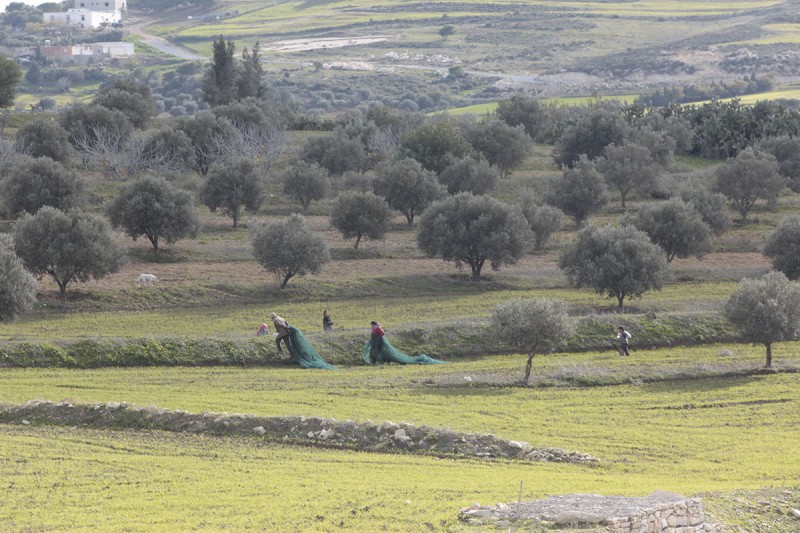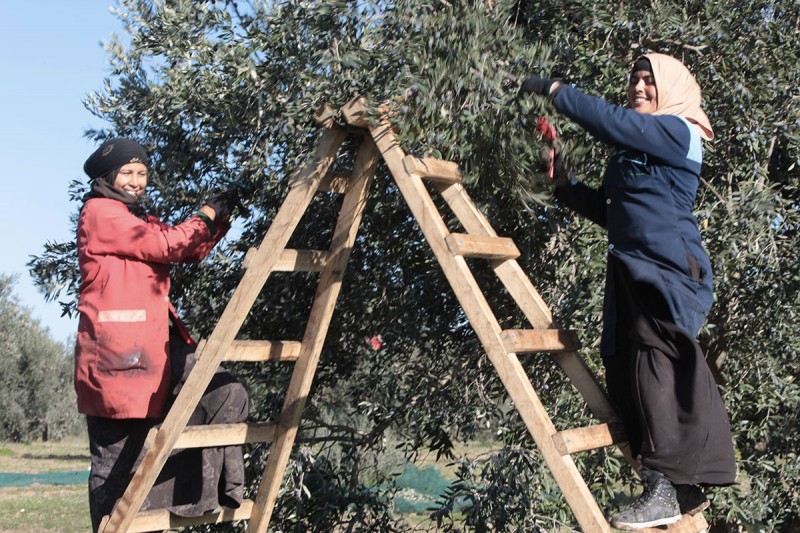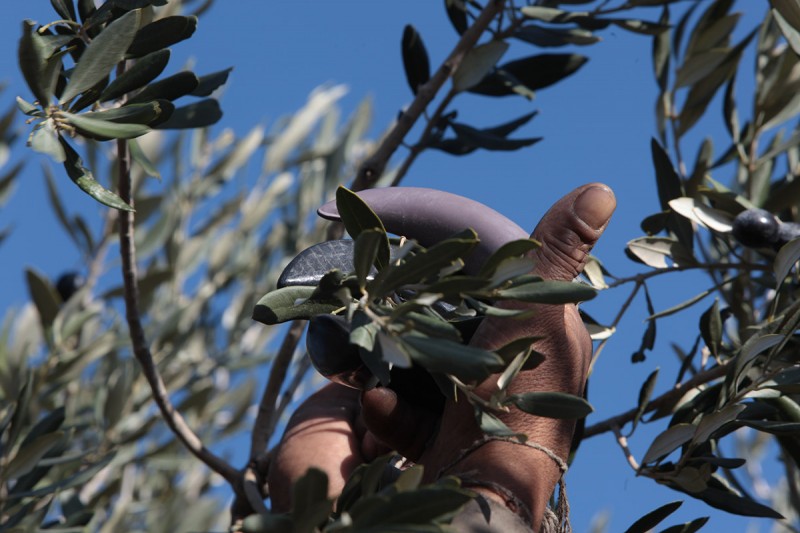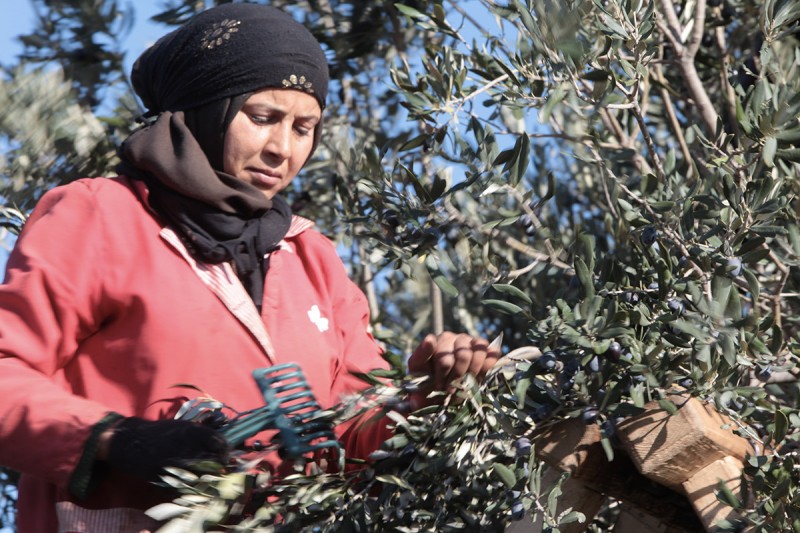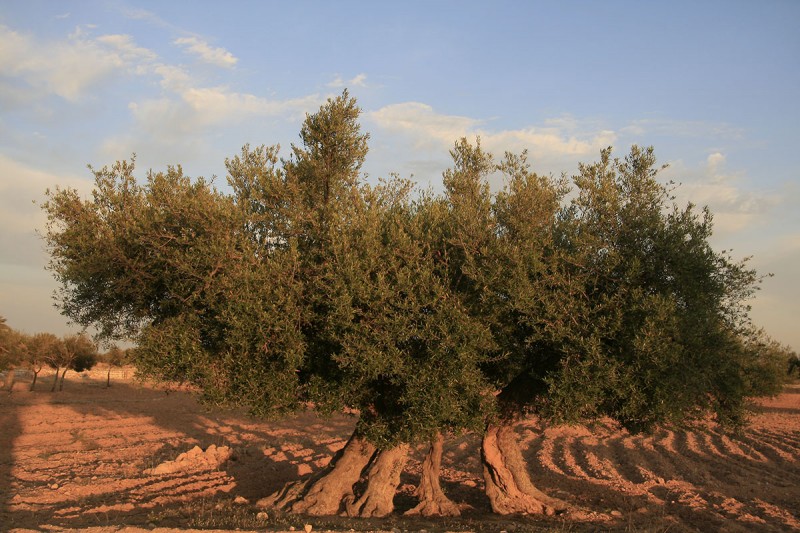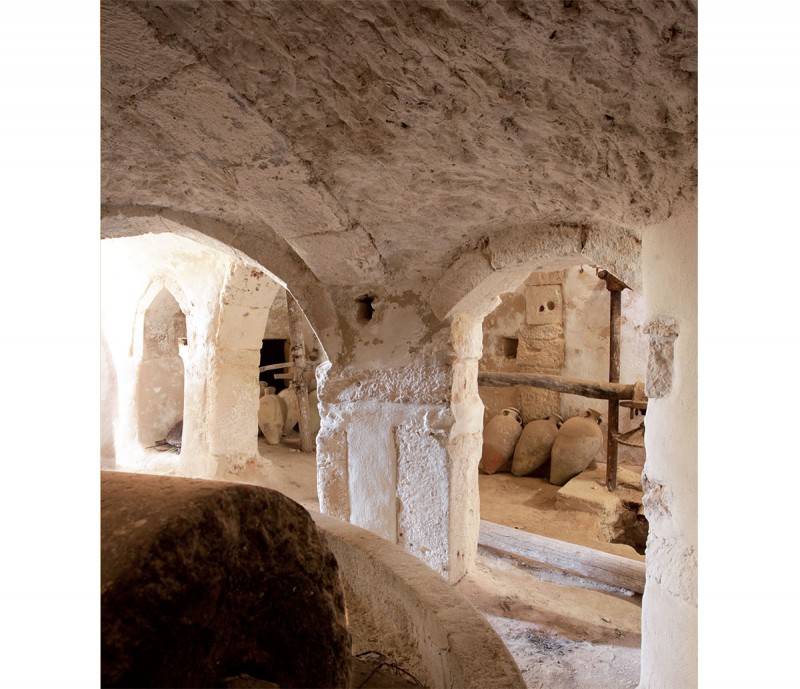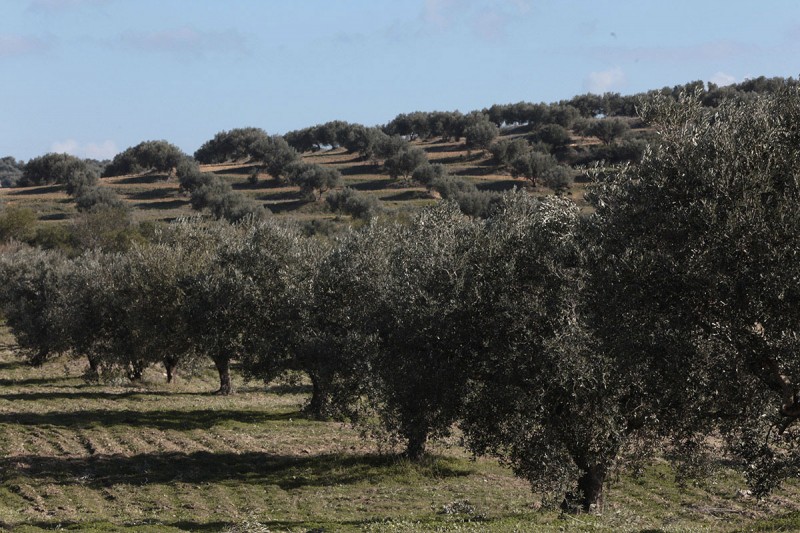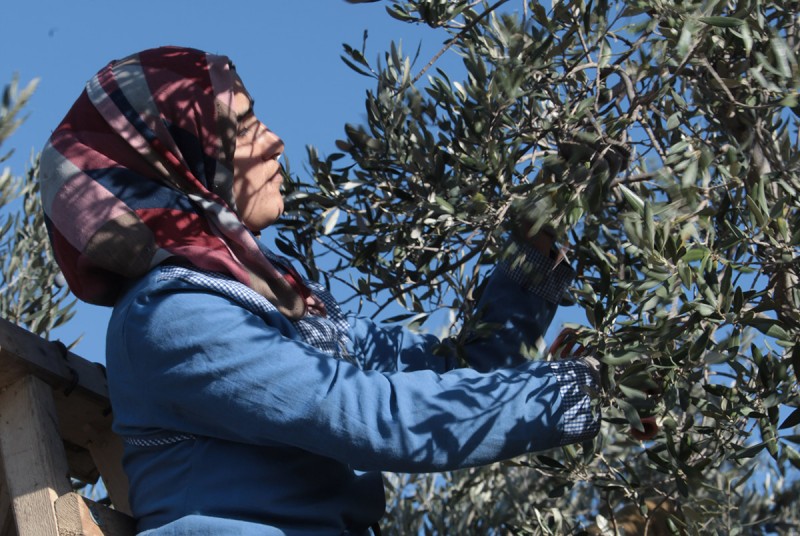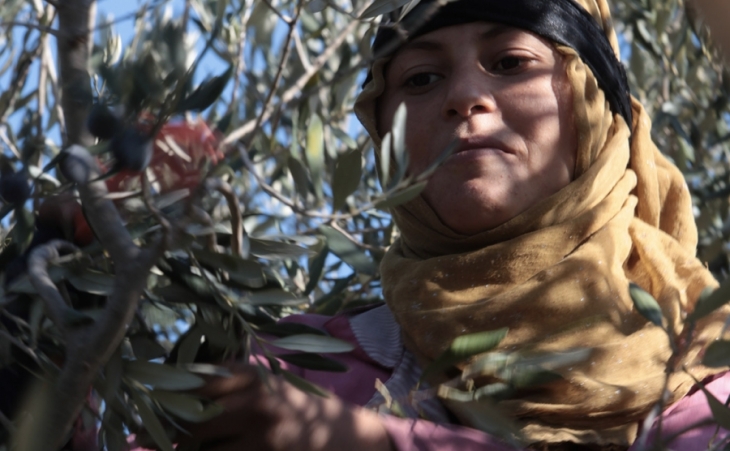
Tunisia is by far the first olive oil exporting nation outside of the European Union. Some years, it exports as much or even more than Spain, despite its small, partly desert territory. It also became the first world exporter of organic olive oil.
Indeed, the olive tree is omnipresent in the landscape: in the huge plains around Sfax, in the sandy lands of Djerba, or on the hillsides in the western mountains.
Today, 95% of Tunisia’s olive groves are cultivated without chemicals. In the fields, olives are still harvested by hand. Take a walk around the inlands and you will see everywhere the double ladders of the harvesters, equipped with rakes or special gloves to pick the fruits branch by branch. The traditional oil-mills also are numerous. There, the olives are crushed under a millstone pulled by a camel (or, more often today, with an electric motor), then the olive paste is pressed between esparto fibres discs. In Djerba and in the South-West, you can see underground oil-mills offering a natural cooling: the temperature there is pleasant and constant. You can recognize them with their large ground-level cupola.
The Tunisian olive oil is still unknown because it rarely sells under Tunisian brands. It is yet one of the most reputed. Tunisian producers regularly win prizes in international competitions.
Here, we separate two great variety for the oil: in the northern regions, the “Chetoui” give an oil of intense taste, lightly bitter. In the Southern ones, the “Chemlali” give a softer-tasting oil. But in reality, tens of different sorts of olives exist in Tunisia.
“The Mediterranean runs from the first olive tree reached starting from the north to the first thick palm groves springing up with the desert”, wrote the historian Fernand Braudel. And Tunisia, from that point of view, is deeply Mediterranean!
Don’t miss the occasion of tasting the local olive oil, for example in villages, with a bit of traditional bread.
Discover the Tunisian olive oil brands: some can be found in stores in Europe, Canada, United States…
Visit the underground oil-mills in Midoun (Djerba), Toujane, Matmata…
Some specialized agencies organize oil-mill visits for groups.
Participate to the olive harvesting at the Seabel Alhambra hotel (Port El Kantaoui), built in an olive grove.
